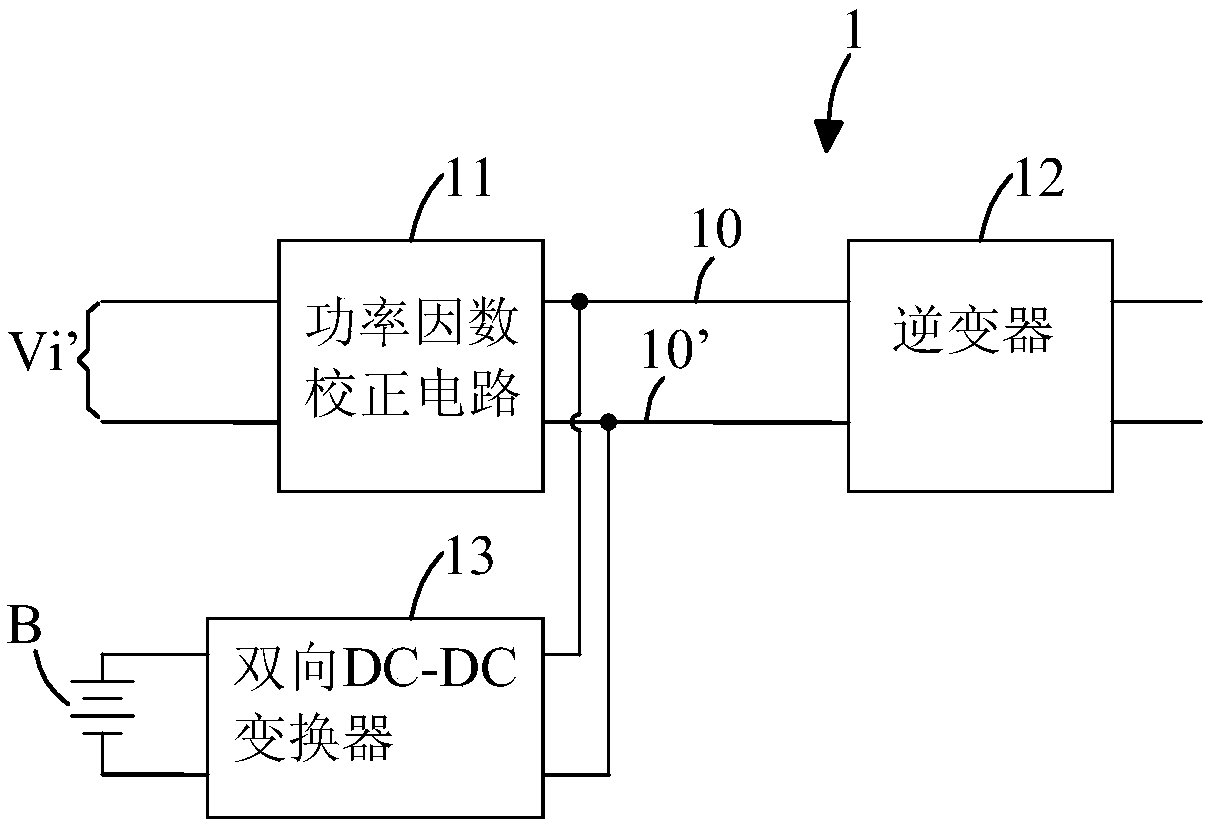Power factor correction circuit and assembly and online uninterruptible power supply comprising same
A power factor correction and circuit technology, applied in output power conversion devices, electrical components, circuit devices, etc., can solve the problem of high cost and loss of low-voltage AC transmission lines, reduce the economy and efficiency of power distribution systems, and increase equipment footprint. and other problems, to achieve the effect of low cost, online service and small size
- Summary
- Abstract
- Description
- Claims
- Application Information
AI Technical Summary
Problems solved by technology
Method used
Image
Examples
Embodiment Construction
[0056] In order to make the object, technical solution and advantages of the present invention clearer, the present invention will be further described in detail below through specific embodiments in conjunction with the accompanying drawings.
[0057] figure 2 is a circuit diagram of a power factor correction assembly according to a first embodiment of the present invention. like figure 2 As shown, the power factor correction component 2 includes a power factor correction circuit 21 and a power factor correction circuit 22. The input terminals of the power factor correction circuits 21 and 22 are connected in series and then connected to a medium-voltage alternating current Vi (for example, 10 kV), and the output terminal The parallel connection is between the positive DC bus 20 and the negative DC bus 20'.
[0058] The power factor correction circuit 21 includes a cascaded full bridge pulse width modulation rectifier 211 and an isolated DC-DC converter 212 . The full-br...
PUM
 Login to View More
Login to View More Abstract
Description
Claims
Application Information
 Login to View More
Login to View More - Generate Ideas
- Intellectual Property
- Life Sciences
- Materials
- Tech Scout
- Unparalleled Data Quality
- Higher Quality Content
- 60% Fewer Hallucinations
Browse by: Latest US Patents, China's latest patents, Technical Efficacy Thesaurus, Application Domain, Technology Topic, Popular Technical Reports.
© 2025 PatSnap. All rights reserved.Legal|Privacy policy|Modern Slavery Act Transparency Statement|Sitemap|About US| Contact US: help@patsnap.com



